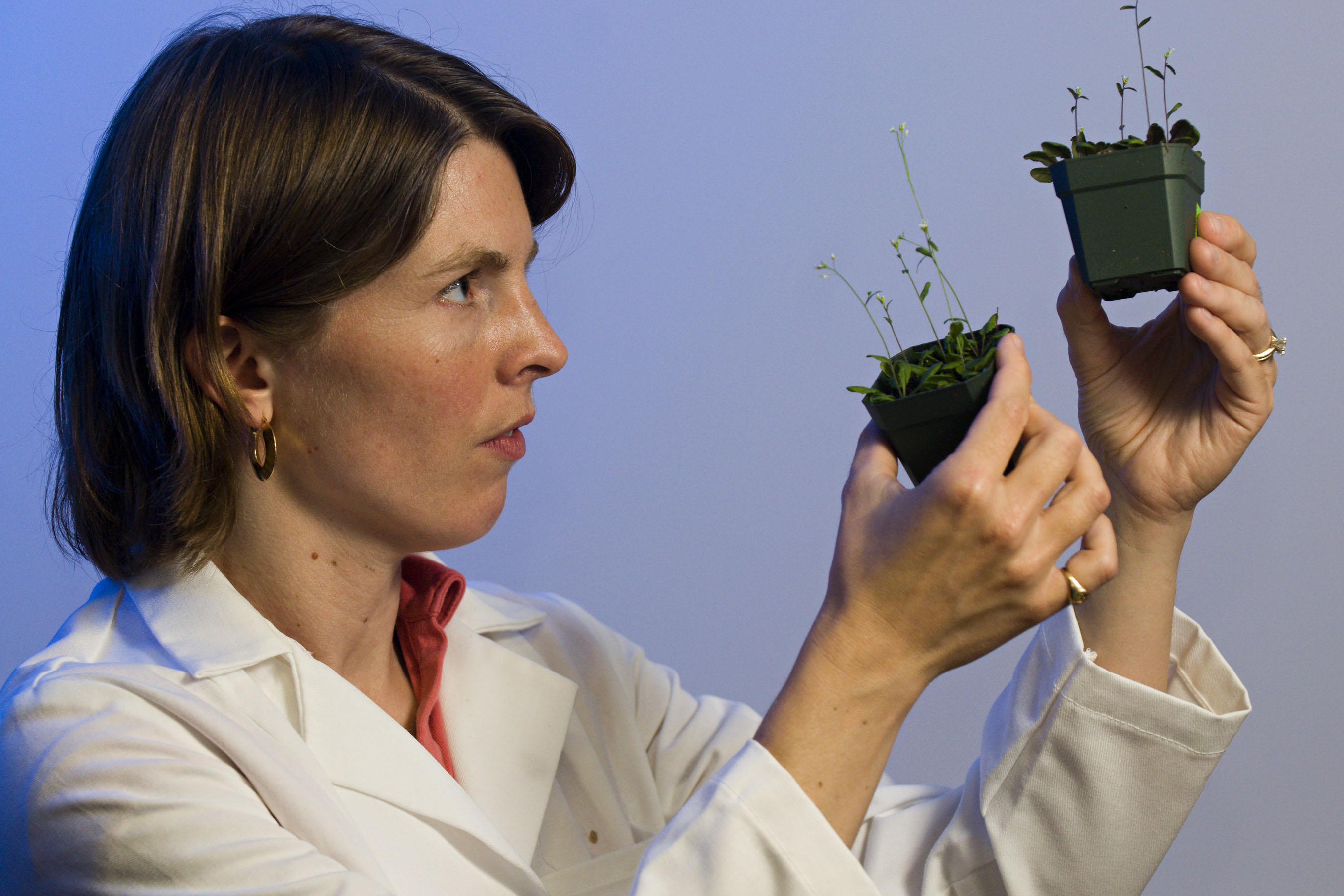New phase of high school-university research partnership funded by National Institutes of Health

A five-year-old Virginia Tech outreach program, which has more than 12,000 high school students doing research and providing results that scientists can use, has received a $1.3 million Science Education Partnership Award from the National Center for Research Resources (NCRR), a component of the National Institutes of Health.
The Fralin Life Science Institute's Partnership for Research and Education in Plants (PREP) also received a $200,000 administrative supplement from NCRR to expand benefits to more students and more high schools and to conduct a rigorous study of PREP’s impacts on student learning.
PREP was started in 2004 by Erin Dolan, associate professor of biochemistry in the College of Agriculture and Life Sciences and outreach director for the Fralin Institute, in collaboration with Frans Tax at the University of Arizona and Eric Brooks at Buena High School in Sierra Vista, Ariz.
"It is part of the Fralin Institute's outreach work with high school students and teachers to involve them in molecular life science. We have the Biotech-in-a-Box program, professional development programs for teachers, and partnership opportunities," said Dolan. "PREP began when some of the high school students we were working with wanted to collect real data – in addition to the demonstration lab projects like those provided by Biotech-in-a-Box."
So, what kind of real data can students collect? "Microbes are not compelling for 15-year-olds, but plants are large enough and hardy enough for student caretakers," said Dolan.
The plant of choice is Arabidopsis thaliana, a relative of the mustard plant. It has a small genome so it was the first plant to have its genome sequenced. It is now a model plant for many research projects. "Plant scientists are systematically – one at a time – knocking out the genes in this plant, and then growing the resulting plant to determine the role of the missing gene. Sometimes it is obvious – the plant looks or acts different," said Dolan. "Sometimes, there is no visible difference. Maybe the missing gene is one that helps the plant respond to drought or insect attack, but that attribute is unknown until the plant is appropriately stressed."
Arabidopsis thaliana has 25,000 genes. Imagine the environmental variables that have to be tested. "We have lots of high school students and they can stress the plants in ways we can't even imagine. So the scientists are knocking out genes of interest and giving the seeds to the students, who are designing environments to study plants' reactions," said Dolan. "Students have made discoveries that are acknowledged in grant proposals and publications."
For instance, in an article her group published in the journal Plant Physiology in May 2008, Virginia Tech biology Professor Brenda Winkel acknowledged by name the students in Cheryl Weidow's fall 2006 biotechnology class at Louisa County High School, who first pointed out the enhanced pigmentation phenotype of plants she had provided for study.
Winkel described the finding for a magazine article last year: "The students noticed that the mutant plants were redder than normal. We were able to quantify the difference and showed that it was real," said Winkel. "It is easy for us [the scientists] to overlook subtle differences in the appearance of a plant when we are focused on under¬standing how things work at a molecular level. The students are quite astute. It demonstrates how working with different perspectives can move things forward."
Shannon Beasley, a teacher at the Central Virginia Governor's School for Science and Technology in, Lynchburg, Va., said of PREP, "The students are able to directly contribute to science that is current. There are not many opportunities for students to work with universities and for scientists to get data."
The goal of the Science Education Partnership Award is to change that – to expand the opportunities. Dolan points to three activities the award will support.
"First, we need to build a cyber infrastructure so that we can collaborate better with people at a geographic distance. For us, that means schools in Norfolk or Southside for instance. It will also enable high schools across the country that are not near a research facility to be involved in research," she said.
"Second, we want to involve low and average achievers – not just the high-achieving students. Because low and average achieving students are used to not getting quick answers, they may be more creative in their approach and may blossom doing research where there is not a quick answer," said Dolan.
"Finally, we want to build the capacity for scientists and teachers from all over the country to mentor high school students in research."
More than 65 teachers and 30 scientists are involved in the partnership. Dolan's team will evaluate PREP's impact on student learning, teachers' ability to mentor students in research, and scientists' ability to mentor students in research and to communicate about research with the public. "This program helps the scientist broaden the impact of their research program. One of the biggest challenges of doing research is the lack of public understanding of how science is done. PREP blurs the boundaries between the practice of science and science education."
Horace G. Fralin’s desire to support the field of biotechnology and the teach¬ing, research, and outreach missions enabled creation of a permanent endowment to support the Fralin Life Science Institute. Proceeds match contributions and grants from other sources, helping to sustain the center’s activities, including the outreach efforts. The project described was supported by Science Education Partnership Award from the National Center for Research Resources, a component of the National Institutes of Health.




